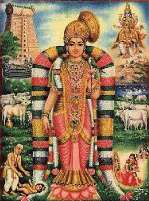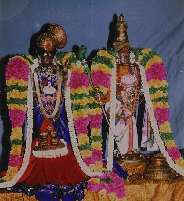Abbakka Rani - The unsung warrior queen

Abbakka Rani or Abbakka Mahadevi was the queen of Tulunadu, who fought the Portuguese in the latter half of the 16th century. She belonged to the Chowta dynasty who ruled over the area from the temple town of Moodabidri.
The Portuguese made several attempts to capture Ullal, the port town as it was strategically placed, but Abbakka repulsed each of their attacks for over four decades. For her bravery, she came to be known as Abhaya Rani, the Fearless Queen. She was also one of the earliest Indians to fight the colonial powers.
The Chowtas followed a matrilineal system by which, Tirumala Raya, Abbakka's Uncle crowned her the queen of Ullal. Abbakka was an extraordinary child and as she grew up showed signs of being a visionary. There was no equal to her in military science and warfare, mainly in archery and sword fighting.
He also forged a matrimonial alliance for Abbakka with Lakshmappa Arasa, the powerful king of neighbouring Mangalore. The marriage however was short lived and Abbakka returned to Ullal. Tirumala Raya also trained Abbakka in the different aspects of warfare and military strategy.
Ullal was a prosperous port and a hub of the spice trade to Arabia and other countries in the west. Being the profitable trading center that it was, the Portuguese, the Dutch and the British vied with one another for control of the region as well as the trade routes.
In 1557, the Portuguese plundered Mangalore and laid it waste. In 1568, they turned their attention to Ullal but Abbakka Rani resisted them yet again. Joo Peixoto, a Portuguese general and a fleet of soldiers were sent by the Portuguese Viceroy Antnio Noronha.
They managed to capture the city of Ullal and also entered the royal court. Abbakka Rani, however, escaped and took refuge in a mosque. The same night, she gathered around 200 of her soldiers and mounted an attack on the Portuguese.
In the battle that ensued, General Peixoto was killed seventy Portuguese soldiers were taken prisoners and many of the Portuguese retreated. In further attacks, Abbakka Rani killed Admiral Mascarenhas and the Portuguese were also forced to vacate the Mangalore fort.
According to traditional accounts, she was an immensely popular queen and this is also attested by the fact that she is even today a part of folklore. The queen's story has been retold from generation to generation through folk songs and Yakshagana.
In Bhuta Kola, a local ritual dance, the persona in trance recounts the great deeds of Abbakka Mahadevi. Abbakka is portrayed as dark and good looking, always dressed in simple clothes like a commoner. She is portrayed as a caring queen who worked late into the night dispensing justice.
Legends also claim that Abbakka was the last known person to have the used the Agnivana (fire-arrow) in her fight against the Portuguese. Some accounts also claim that she had two equally valiant daughters who fought alongside her in her wars against the Portuguese. Tradition however treats all three mother and two daughters as the same person.
Abbakka's memory is much cherished in her home town of Ullal. The "Veera Rani Abbakka Utsava" is an annual celebration held in her memory. The Veera Rani Abbakka Prashasti(award) is awarded to distinguished women on the occasion.On January 15, 2003, the Indian postal department issued a special cover on Rani Abbakka. There have been calls to name the Bajpe airport and a naval vessel after the queen. A bronze statue of the queen has been erected in Ullal and another in Bangalore. The Karnataka Itihasa Academy has called for renaming the Queen's road in the state capital as 'Rani Abbakka Devi road'.Originally posted by: radhikarani
anu- maharana kumbha
.
Bhargu- so funny. Kings khate khate motu ho jate. Hehe. Many kings r fat. Our gr8 king pratapji also motu. Hehehehe.
Btw ur pics nt visible bhargu. I cnt c it.
 omnipresent mysterious One. Tradition reckons 12 Alvars, of which Andal is the only female. Between the fifth and ninth centuries, in the Tamil-speaking region of South India, these saints revitalized the Indian religious milieu, sparking a renewal of devotional worship throughout the subcontinent. Traveling from place to place, from temple to temple, from holy site to holy site, they composed exceedingly beautiful poetry to their Divine Beloved, Vishnu, as an expression of their love for Him. Anyone can see why their poetry was so attractive; at once both impassioned and philosophical, their words cut across all barriers of caste and class, attracting all to their faith. In doing so, they sculpted a new religious heritage of intensely emotional bhakti, or love of the Divine, whose impact is still felt today in the Indian religious life. Andal, whose life and poetry are celebrated every December-January, is the most visible contributor to this heritage.
omnipresent mysterious One. Tradition reckons 12 Alvars, of which Andal is the only female. Between the fifth and ninth centuries, in the Tamil-speaking region of South India, these saints revitalized the Indian religious milieu, sparking a renewal of devotional worship throughout the subcontinent. Traveling from place to place, from temple to temple, from holy site to holy site, they composed exceedingly beautiful poetry to their Divine Beloved, Vishnu, as an expression of their love for Him. Anyone can see why their poetry was so attractive; at once both impassioned and philosophical, their words cut across all barriers of caste and class, attracting all to their faith. In doing so, they sculpted a new religious heritage of intensely emotional bhakti, or love of the Divine, whose impact is still felt today in the Indian religious life. Andal, whose life and poetry are celebrated every December-January, is the most visible contributor to this heritage. The life of Andal is remarkable in its romantic simplicity. A devout brahmin named Vishnucitta lived in Villiputtur, a town near Madurai. His daily duties included procuring
 |
| Vishnucitta discovering Andal. Scultpure above the tulasi garden in Srivilliputtur |
Godai grew up in an atmosphere of love and devotion. Vishnucitta doted on her in every respect, singing songs to her about his Beloved Krishna, teaching her all the stories and philosophy he knew, and sharing with her his love of Tamil poetry. The love Vishnucitta had for his Beloved Lord intensified further in his daughter, and before long she was passionately in love with Lord Krishna. Even as a child, Godai made up her mind to marry none but the Lord of Brindavana, and refused to think of any human being in similar terms.
She imagined what it would be like to be His bride, playing the role of His beloved, enjoying His presence. Unknown to her father, she adorned herself daily with the flower garland he prepared for the Lord at the temple. After admiring her reflection and thinking of herself as His ideal bride, she would put the garland back for her father to take to the temple and offer to the Lord.
 |
| Traditional Painting of Andal |
One day, Vishnucitta noticed a strand of Godai's hair on one of the garlands. Shocked and saddened by this desecration of what was meant only for the Lord, he scolded Godai for her misuse of the garland and discarded it. He carefully prepared a new one and offered it to the Lord, begging His pardon all the while.
That night, the Lord appeared to Vishnucitta in his dream and asked him why he discarded Godai's garland instead of offering it to Him. He told Vishnucitta that He missed the scent of Godai's body in the flowers, and that He preferred them that way. Would he please continue to give the garlands once worn by Godai? Overcome with emotion, Vishnucitta awoke and cried tears of both joy and remorse. It dawned on him that his daughter was someone whose love of God was so intense and pure that even he had not comprehended its extent. Her spiritual greatness was such that the Lord Himself wished to share her presence. From this day on, she became known as"Andal", the girl who "ruled" over the Lord.
Andal blossomed into a beautiful young woman as she came of marriageable age. When asked to marry, however, she stubbornly refused, saying that she would only agree to marry Sri Ranganatha, the Lord at the great temple town of Srirangam. Vishnucitta despaired, wondering what was to become of his daughter. One night, Lord Ranganatha appeared in his dream and asked that Andal be sent to Him in all her wedding finery. Simultaneously, the Lord appeared before the priests at Srirangam and asked them to prepare for the coming of Andal. Vishnucitta once again was filled with both joy and sadness; joy that his beloved daughter would attain her goal, but sadness
 |
| The Divine Couple: Andal and Rangan in Srivilliputtur |
Andal waited with excited anticipation as the wedding party approached Lord Ranganatha's shrine. As they entered the temple, she jumped out of the palanquin, unable to restrain herself any longer. Running into the temple sanctum, she embraced Lord Ranganatha and disappeared in a blaze of glory, having joined her Lord. She was only fifteen at the time.
The hagiography of Andal as presented above is undoubtedly historically true in most important respects. Today, the tulasi garden in which she was found is preserved in Srivilliputtur. Vishnucitta's house, adjacent to Lord Vishnu's temple, has been converted into a temple in honor of Andal and contains the well in which she admired her reflection while wearing the Lord's garlands.Andal is now one of the best loved poet-saints of the Tamils. Pious tradition reckons her to be the veritable descent of Bhumi Devi (Mother Earth) in bodily form to show humanity the way to His lotus feet. She is present in all Sri Vaishnava temples, in India and elsewhere, next to her Lord, as she always desired.
Most of all, however, Andal is remembered for her poetry, in which she often strikes autobiographical notes about her love for her Lord. She describes herself as a young girl, still not fully mature, pining away for Him. She beseeches her friends, the god of love, and even animals for help in her quest to attain Him. Finally, she describes her good fortune of being the daughter of Vishnucitta, the best of the devout, who lives in Srivilliputtur and adores the Lord Andal composed two works in her short life. Both are in Tamil and are unique in their literary, philosophical, religious, and artistic content. Her contribution is even more remarkable considering that she was a teenage girl when she composed these poems, at a time when there is no other record of Tamil women composing poetry
Far from being the prattlings of a youngster, Andal's verses display a literary and religious maturity far beyond her years.
Her first work is the Tiruppavai, a poem of thirty verses in which Andal imagines herself to be a cowherd girl during the incarnation of Lord Krishna. She yearns to serve Him and achieve happiness not just in this birth, but for all eternity, and describes the religious vow (pavai) that she and her fellow cowgirls will take for this purpose
The second is the Nacciyar Tirumoli, a poem of 143 verses. Tirumoli, literally meaning "sacred sayings", is a Tamil poetic style in which the work is composed. "Nacciyar" means goddess, so the title means "sacred sayings of our Goddess." This poem fully reveals Andal's intense longing for Vishnu, the Divine Beloved. Utilizing classical Tamil poetic conventions and intermixing stories from the Sanskrit Vedas and Puranas, Andal creates imagery that is quite possibly unparalleled in the whole gamut of Indian religious literature.The impact of these works on the daily religious life of the South Indian has been tremendous. Just like the Ramayana, people are never tired of listening to the Tiruppavai. The poem itself is recited with great religious fervor by women, men, and children of all ages, particularly in Tamil Nadu. The daily services in most Vaishnava temples and households include its recitation.
Devotee of Panduranga Vittala. Though suffering hardships from a cruel mother- in- law and a foolish husband, She bore it and reposed pure 'Bhakti'(devotion) in Lord Vittala whom, for her sake, served her people and transformed them.
A poor man and his wife lived in a town near Pandharapur. Though poor, they were lead- ing a peaceful, contented life. They would, within their limitations, make dona- tions to charities; they would welcome and entertain guests.They were partaking in others' joys and helping those in difficulties. They were liked by all.
Pandharapur is a holy place. Panduranga Vittala is the presiding deity there. There were a large number of devotees in that vicinity worshipping Him. The poor couples too were among them. They had no children and it distressed them. They ardently wor- shipped Vittala daily and prayed for getting children. As though in response to their devout prayers, the poor man's wife gave birth to a female child. The baby grew up into a beautiful girl possessing many good qualities since childhood. Sakhu had imbibed in her a deep sense of devotion of God. She assisted in the 'Puja' at house by preparing flower-garlands, sandal- wood paste, etc., tended the cattle, assisted her mother with cooking and was constantly engaged in useful domestic chores. The parents loved her immensely.
Neighbors looked upon this smiling, active girl with delight. She would never hurt anybody nor utter harsh words. She made friends with other children and played with them. She respected the elders and was devoted to them. Everybody loved her.
comment:
p_commentcount